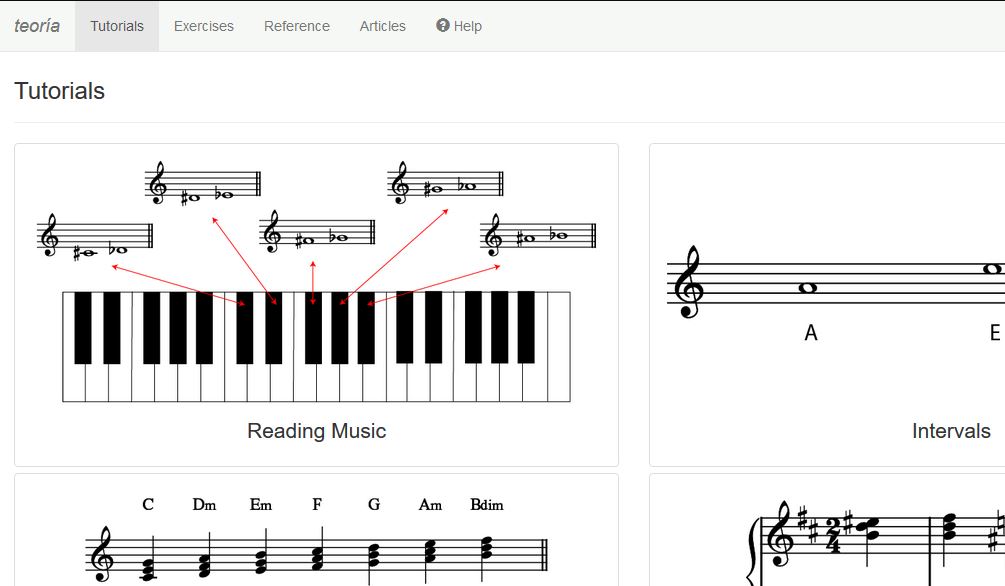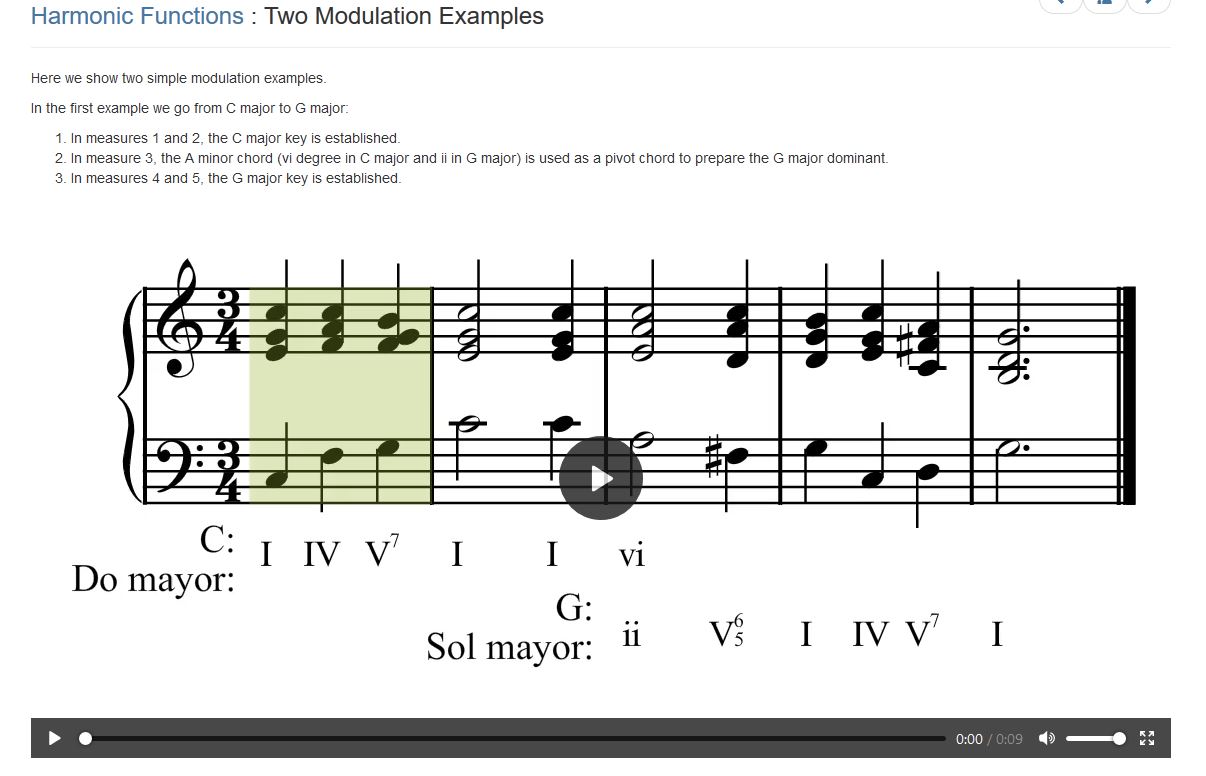As a teacher, I am always on the hunt for high-quality learning tools to share with my music students. Today, I’d like to write about the excellent, free website Teoria.com.

Teoria home page
Teoria is a platform for learning music theory & improving your ear. The website provides well-designed and thoughtful tutorials on concepts like reading scores, chord construction and harmonic analysis. These tutorials are accompanied by exercises which enable students to gain fluency with each concept. These exercises are highly-dynamic, allowing students to tweak the parameters of an activity to match their particular skill-level, goals and interests.
Though theory has a reputation for being stale and mathematical, I believe that all musicians should make efforts to develop their understanding of this domain. Theory lays bare the fact that music is both a shrewd science and a brilliant art. It elucidates the underlying structures of sound in a way that does not diminish, but rather, augments the art form’s beauty. The idea that music theory ‘limits’ your creativity is something I do not agree with. As the amazing musician Adam Neely reminds us, “Music theory is not prescriptive [i.e. a series of rules that must be followed]… but is a descriptive discipline which is one that describes or seeks to describe music on its own terms as it’s made in the real world, free of aesthetic or artistic judgment.” Theory is a tool for understanding musical phenomena, and, understanding these phenomena means we can emulate, utilize or modify them as we see fit during performance, composition or improvisation.

An example of a lesson
Now, theory aside, I believe that the greatest asset on Teoria is the ear-training exercises. Training your ear without a structured class or study buddy can be very difficult. It is hard to test yourself and rely solely on your ears when you are playing the instrument because you know precisely what notes are being played. Therefore, Teoria is an incredible tool for solo practice. The platform generates essentially endless ear-training exercises to aid you in becoming fluent with identifying intervals and chords as well as taking rhythmic and melodic dictation. The fact that it is browser-based makes it very easy to practice on-the-go or on a public or private computer. For students of mine who are serious about aural skill development, I cannot stress how useful this site is. As educational psychologists have noted, engaging in distributed practice (i.e. 5-10 minutes a day) can have remarkable benefits for learning. This is how I recommend using Teoria, for a few minutes a day while eating breakfast, waiting for the bus or taking a break from the hustle-bustle of life. I have been sharing this tool with students for years and will continue to do so, both in my 1:1 and group piano lessons.

Settings for 7th chord ear exercise
If you’re reading this & wish to try Teoria, please do so and let me know what you think in the comments!
-S

